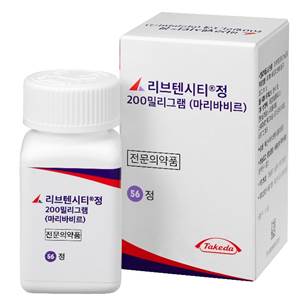Takeda Pharmaceuticals Korea said on Thursday that Livtencity (ingredient: maribavir), a tablet for cytomegalovirus (CMV) infection and disease after transplantation, will be covered by Korean national health insurance starting April 1.

Livtencity is an antiviral pill developed to treat CMV infections and diseases that are refractory to or resistant to one or more existing treatments (ganciclovir, valganciclovir, foscarnet or cidofovir) in adult patients who have undergone solid organ transplantation (SOT) or hematopoietic stem cell transplantation (HSCT).
Livtencity scored the approval from the Ministry of Food and Drug Safety in Korea in December 2022.
The health insurance coverage for Livtencity will be available for following cases:
Adult patients who require treatment of CMV infection and disease following SOT or HSCT and who have a positive serum CMV-PCR test within five days prior to initiation of Livtencity and whose viral load remains unchanged or increases from baseline after at least two weeks of ganciclovir or valganciclovir
Those who have at least one clinically significant CMV drug resistance-causing mutation identified by sequencing,
Those experiencing serious hematologic side effect who cannot continue treatment with ganciclovir or valganciclovir
If the blood CMV-PCR test at two weeks after Livetencity treatment shows no change or an increase in the viral load, the treatment should be discontinued and co-administration with ganciclovir or valganciclovir will not be covered by health insurance, Takeda Pharmaceuticals Korea said.
Livetencity’s efficacy and safety were confirmed in a phase 3 SOLSTICE study in adult patients with refractory or resistant CMV who received SOT or HSCT.
At the end of Week 8, CMV viremia clearance in the Livtencity arm was 55.7 percent, which was more than twice as good as the investigator assigned treatment (IAT) arm (valganciclovir/ganciclovir, foscarnet or cidofovir, 23.9 percent).
The proportion of patients who maintained CMV viremia clearance and symptom control through Week 16 was higher in the Livtencity group (18.7 percent) compared to the IAT group (10.3 percent).
Taste disturbance was the most frequent adverse event reported in the Livtencity group, but less than 1 percent of them discontinued the treatment.
Lee Dong-gun, chairman of the Korean Society of Infectious Diseases, said there is an urgent need for treatment options for patients with CMV infection and disease who are unable to continue treatment due to inadequate response or toxicity of existing medicines.
“The availability of Livtenity for health insurance coverage is significant because it provides patients with an effective treatment option with a confirmed safety profile,” he added.

